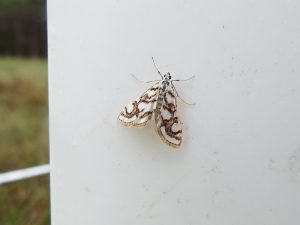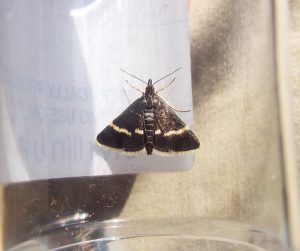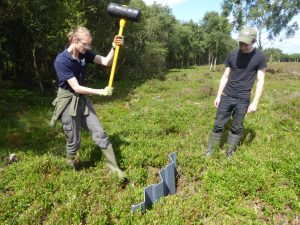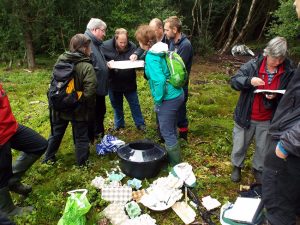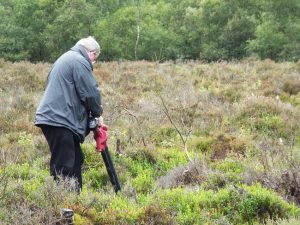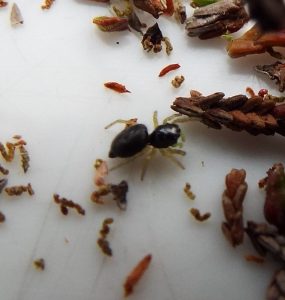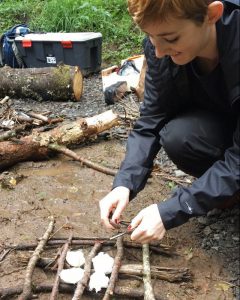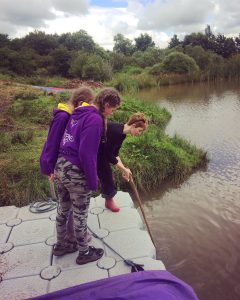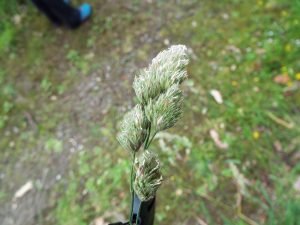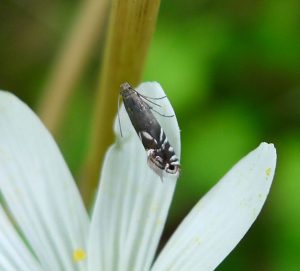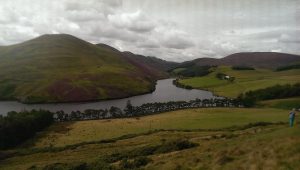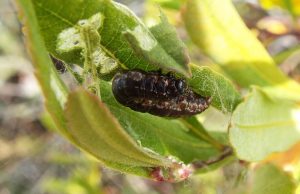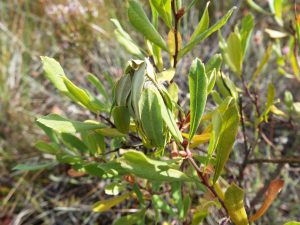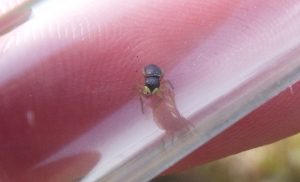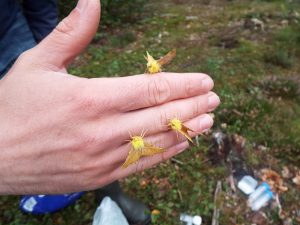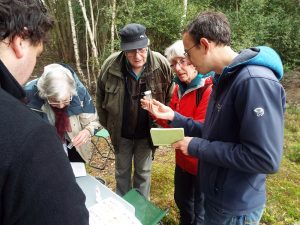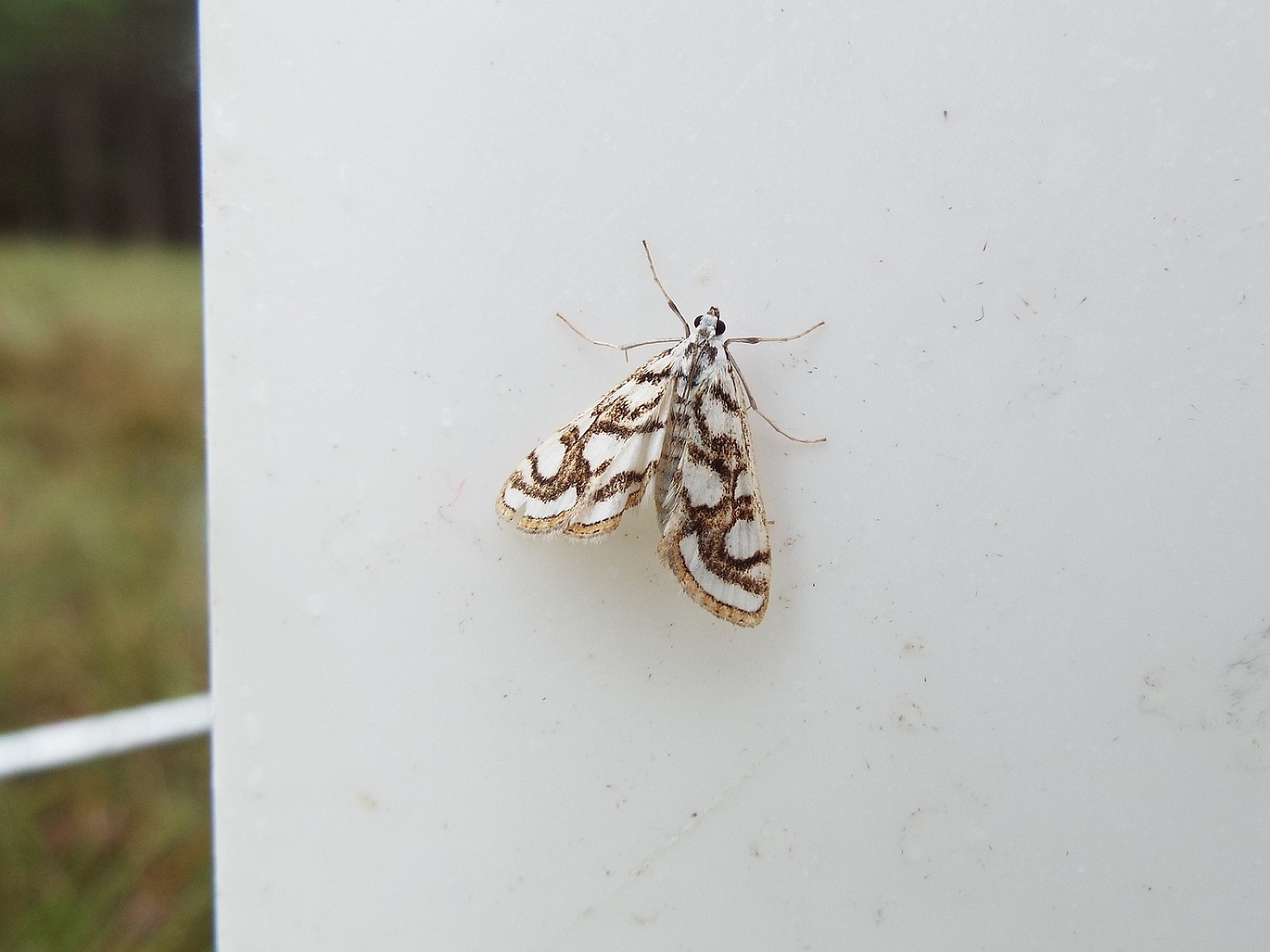
Wow! What an amazing last couple of months. I’ve been keep very busy with a mixture of brilliant bog surveying, terrific training courses and assisting or running some fun events working with the public.
July
July seems so long ago now! With sun blazing it was a fantastic time to be out and about on the bogs, with the warm air encouraging the moths to get active while they could! (the Scottish summer doesn’t last long!). In this one month I managed to record 122 different species of moth with seeing well over 1000 moths total!! Over half of which were micros. It was an incredible experience to discover and learn about the Lepidoptera fauna on these bogs.
The one day I was not on a bog turned out to be very exciting indeed! I found a stunning looking micro called Pyrausta cingulata, up on the Ochil hills. This turned out to be quite a significant record; being the first ever record for the Vice-County! The moth recording scheme splits up the UK into lot of different Vice-Counties, where the vice county recorder checks all the records to verify their authenticity. The UK is split into many vice-counties so that the data is analysed in small manageable chunks and is looked at by people who are familiar with the local moth species. The truth of the matter is that Micro moths have been so under-recorded in the past that we still don’t truly know many of their actual distributions in the country. Discovering that this species is found in another vice-county helps to build up our knowledge of this species’ ecology in the UK.
It wasn’t a month all about surveying! I managed to get my hands dirty with some Practical peatland restoration work at Wester Moss. Putting in dams to re-wet areas of the bog and clearing birch scrub before it begins to dominate and dry out the bog.
In conjunction with The Inner Forth Landscape Initiative and BugLife, I helped run the Spider Hunt at Wester Moss. We ran a moth trap and showed off some the spectacular moths that peatlands have to offer. The main aim of the day was to see if we could find the rare Bog Sun Jumping spider. It was recorded at Wester Moss a couple of years ago and we wanted to ascertain if after the recent conservation work it was still present. And…..it was! Which was fantastic news as Wester Moss is only 6 sites in the UK this little beastie is found on. At 3mm in length, it is probably very under-recorded but being a peatland specialist, it’s a national rarity none the less.
August
August got off to a terrific start. I and fellow trainee Kirsty helped out TCV at Auchengillen’s Scout Jamboree. It was an international camp event so we were working with scouts from all across the world. We all had great fun, flower pressing, pond dipping and making campfires.
Throughout the month had the opportunity to attend many different training workshops, focussing identifying many different taxa. They were an excellent opportunity to broaden my knowledge and apply my identification skills to different taxa. I learnt about Hoverfly ID, Summer Tree ID, Wildflower ID and Grass ID. I found it an incredibly rewarding experience as I got a much broader picture of ecology and seeing how everything tied into moths I was seeing. For example, below is a picture of a grass species I did not previously know; Cocksfoot Grass, Dactylis glomerata. This is a very common grass associated with improved soils and was once heavily used in agriculture. I knew of a moth called the Cocksfoot moth, Glyphipterix simpliciella. It is very common all across the country but I only seen a few individuals this summer season and none on my bogs. Now I know how to ID the grass and understand a little of its ecology, I am more informed about the moth’s ecology as well.
The training highlight of the summer was the Phase 1 Habitat Survey Training course I undertook with TCV and Lindsay Mackienlay from Parnassus ecology. A fantastic course which I found highly informative and again helped give me a broader understanding of the ecology of the habitats and the moths that live in them. It also re-affirmed to me the importance of surveying; how it’s vital to inform effective conservation management.
So back out into my bogs I went, where I made not one but two exciting discoveries! In the Carse of Forth there is a very large bog called Flanders Moss which is a natural nature reserve. Hundreds of years ago, many of the bogland areas in the Carse were cleared for farmland. This has left lots of smaller bogs isolated from main bog at Flanders. One of my sites is one such bog and it had never been surveyed for invertebrates before. This summer was very exciting as I was finding lots of new species for the site. One particular species I was searching for was the Argent and Sable Moth; a nationally scare species which is a bogland specialist in Scotland. After many days with no luck, I managed to find a larva, feeding between leaves it had spun together(spiders aren’t the only animals to use silk!). An excellent find, as this determines another breeding site in Scotland for this rare species.
The day was then topped! After sweeping for some caterpillars I noticed in my net a familiar little spider. The Bog Sun-Jumper spider! The spider we searched for the previous month. The record has since been confirmed and it appears I’ve uncovered the 7th site in the UK for this little spider.
September
As the leaves begin to change colour to orange and yellows, so do the moth species! Many autumnal beauties have found their way to my traps over the course of this month, like these stunning Canary-Shoulder Thorns.
At the start of the month I travelled “down south” to the Field Studies Council centre Preston Montford a wonderful training course; an introduction to Leaf-mining moths, taking by Dave Grundy. Looking at the caterpillars of moths is just as important as looking for the adults and in some cases is much easier! Leaf-mining moths as adults tend to be very difficult to identify due to their small size and their similar appearances but the mines they make as larva can be used to determine the species. As the name suggests these little caterpillars live inside a leaf and as they eat their way through they make little mines. The course was a really great and I learned so much is a short space of time.
And finally, last week I ran my own event at Wester Moss, Mossy Moth night (try saying that 5 times fast!). A number of local nature enthusiasts came along to learn about Wester Moss and experience a night moth trapping. We then reconvened in the morning to go through the catch and learn how to identify some of the moths that they had manged to trap. It was a marvellous chance to show off these animals that many had never seen before and it was a very enjoyable experience for all.
It truly has been a superb summer. I’m learning new things all the time and getting some fantastic experience surveying and running engagement activities. A big thank you once again to the funder Esmee Fairbarin for providing me this opportunity.

